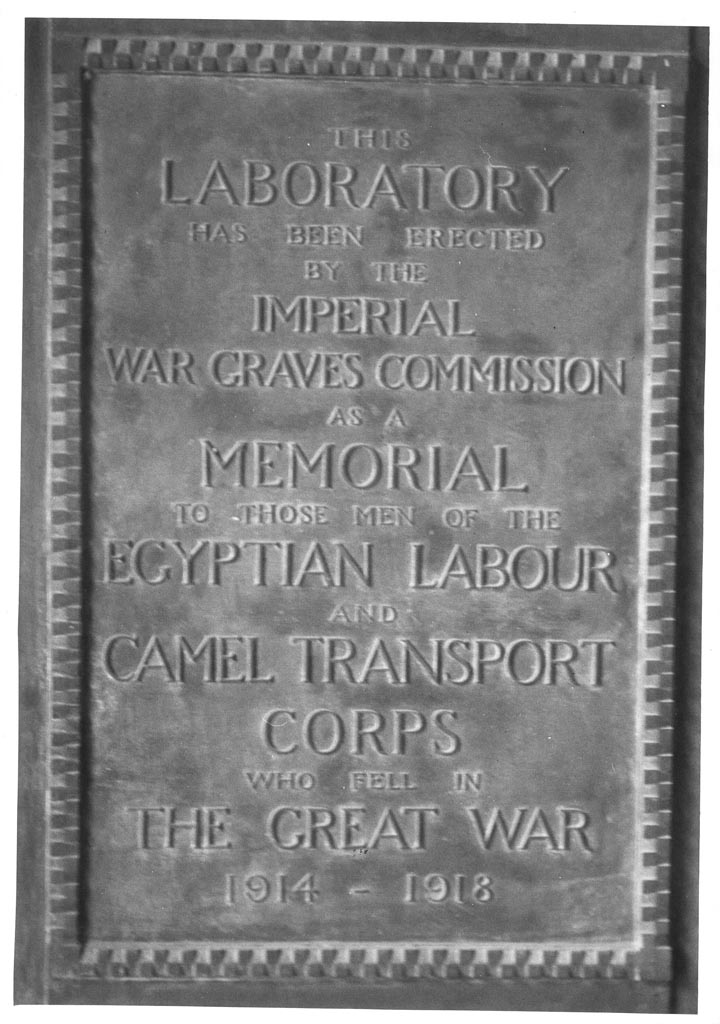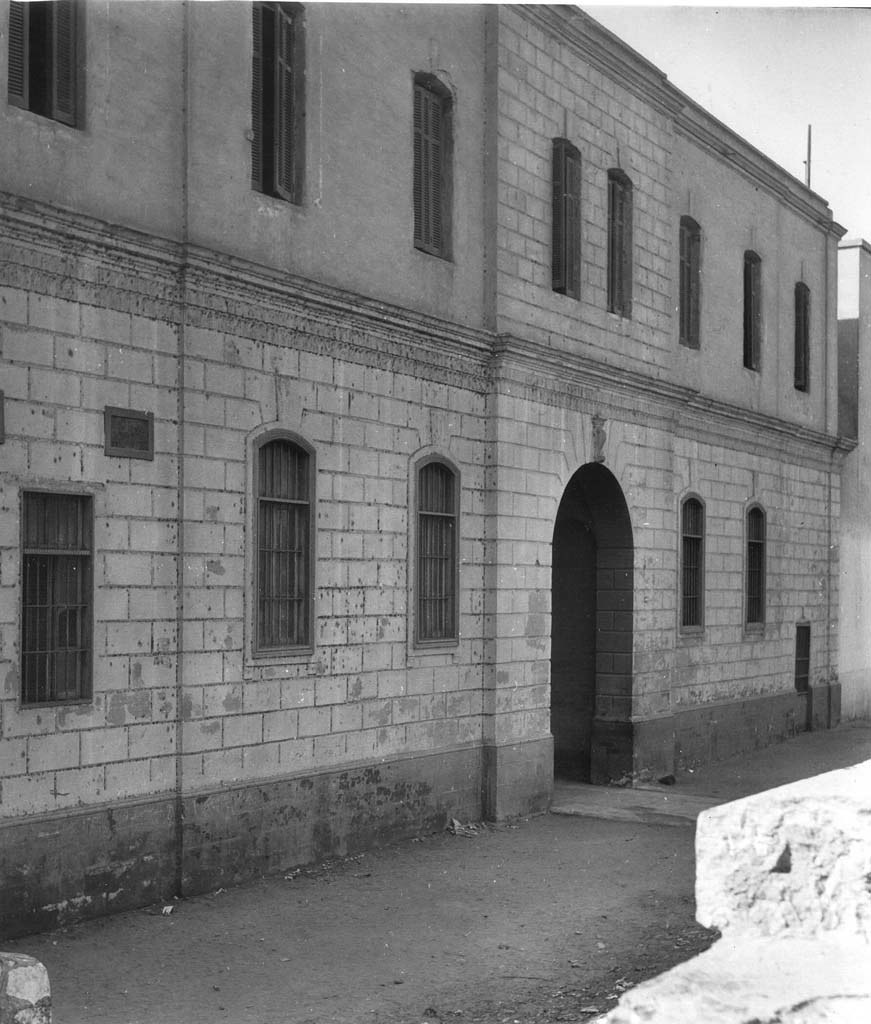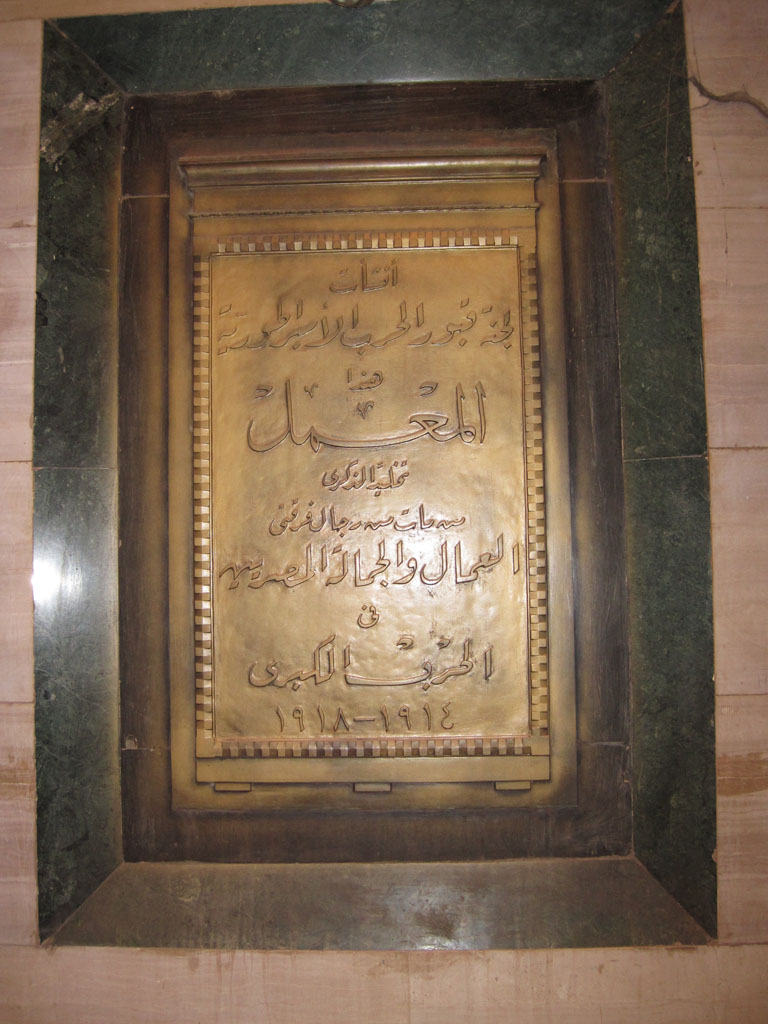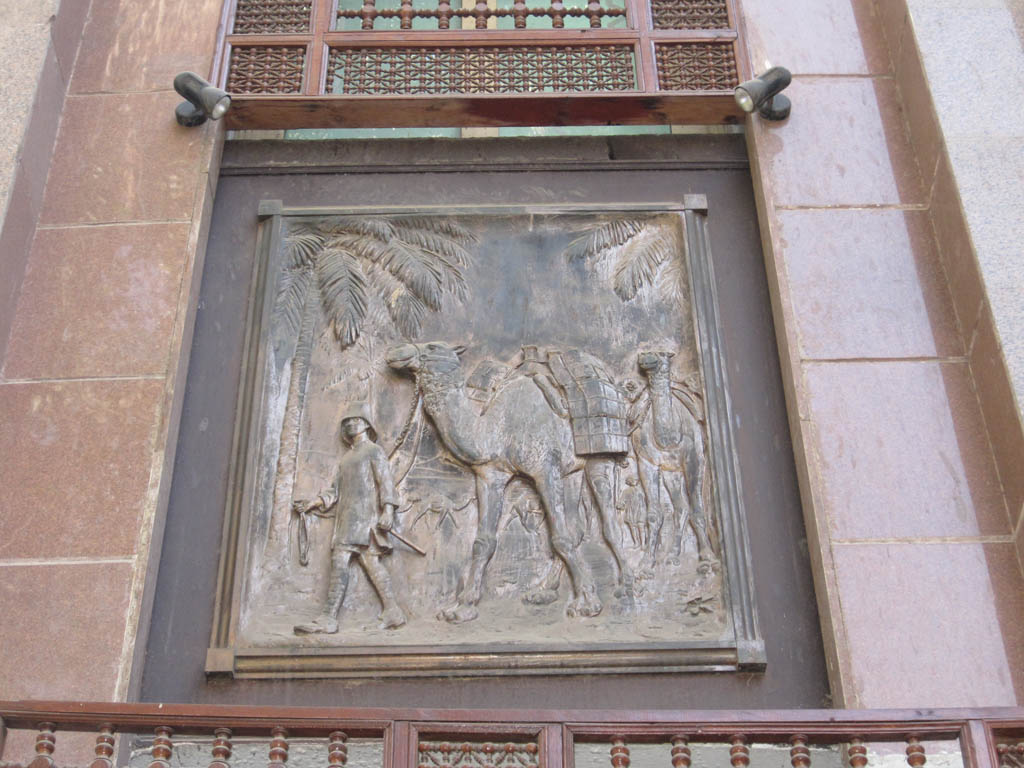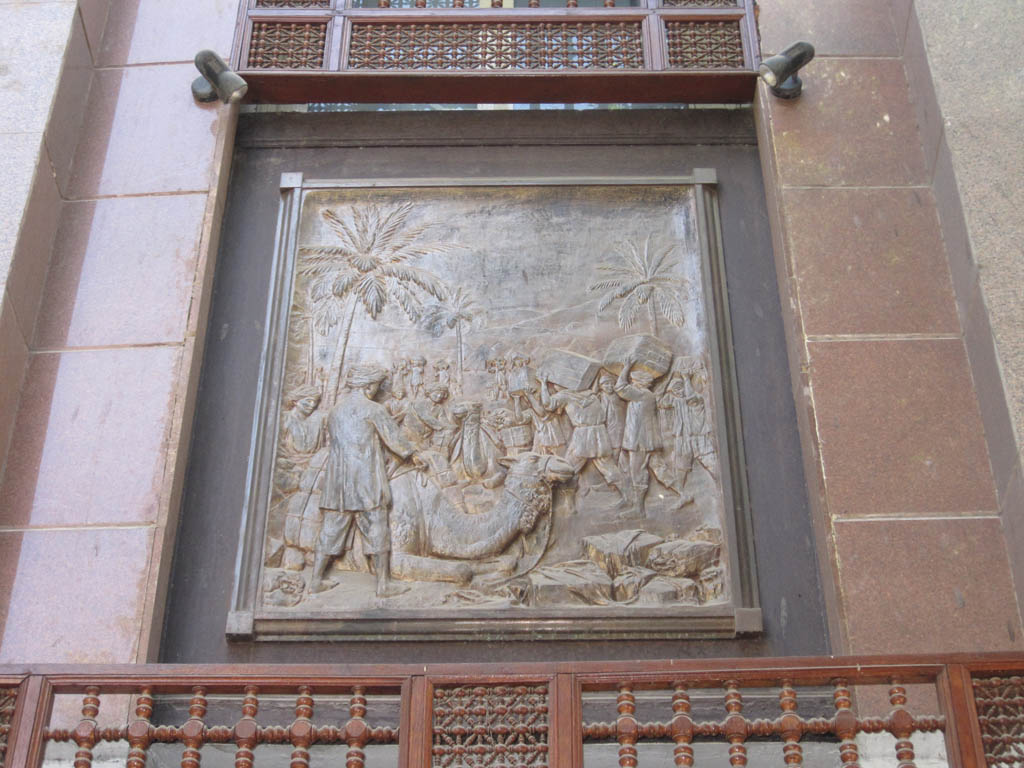Giza Memorial
- Country Egypt
- Total identified casualties 0 Find these casualties
- GPS Coordinates Latitude: 30.01527, Longitude: 31.21562
A memorial like no other

Giza Eye Hospital
Location: Giza, Egypt Language: Arabic Altitude: 24m Rainfall: 25mm
Temperature: 9°c - 37°c Biggest challenge: Commemorating unknown numbers
War memorials come in many shapes and sizes. The Commonwealth War Graves Commission is known around the world for creating a blueprint for how memorials, and cemeteries, should look.
But anyone familiar with our work will know that if we created a rule, it was probably broken at some point too.
Nowhere is that more obvious than in the hot, busy streets of Giza. It’s the location of quite possibly the most unusual and least known of all our memorials; one that broke the convention of ‘functional memorials’.
That’s because it is, in fact, a laboratory.
Building an annexe to an Egyptian eye hospital at the same time as constructing grand monumental memorials elsewhere in the world sounds strange, but it was no accident.
During the First World War around 125,000 Egyptian men supported British Empire Forces as part of the Egyptian Labour Corps (ELC) and the Camel Transport Corps (CTC).
Their work was varied. Some were stretcher bearers, others built vital supply and transport infrastructure that kept the war effort on the move.
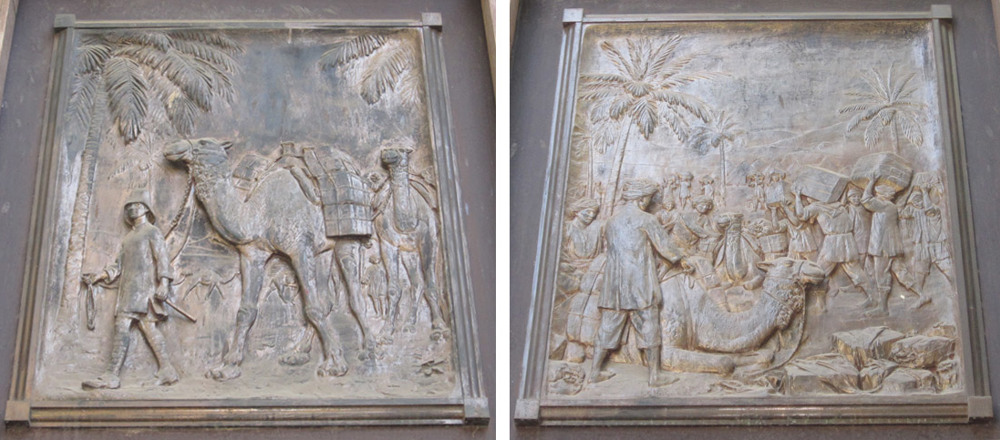
The panels of the Giza Memorial represent the men of the Egyptian Labour Corps and Camel Transport Corps.
However, when those serving with the ELC or CTC died, their units often buried them in unmarked graves or kept sporadic war records, if at all. It’s estimated around 10,000 to 50,000 died during the First World War but an accurate number is impossible to know without proper records.
When the Commission’s work to commemorate all who served under the banner of British Empire forces began it was faced with the impossible task of remembering an unknown quantity of anonymous men from Egypt.
A long debate took place amongst the Commission’s representatives in Egypt and Egyptian authorities, which saw many an idea bounce back and forth. They liked the idea of a memorial mosque, but there were enough already in the main cities.
They liked the idea of a war memorial with a function.
In the end, after drawn-out discussions, it was agreed that a memorial laboratory building, to sit within the grounds of a new ophthalmic hospital, then under construction, would be the most fitting solution.
A fully functional building that could be of benefit to the Egyptians now and in the future. And that it does to this day. Nearly a century later the Giza Memorial is still in operation as a key part of the hospital’s training facilities.
And on the outside walls stand tall bronze plaques that bear the likeness of some of the anonymous but not unremembered men whose lives, and deaths, continue to be commemorated by this most curious of war memorials.
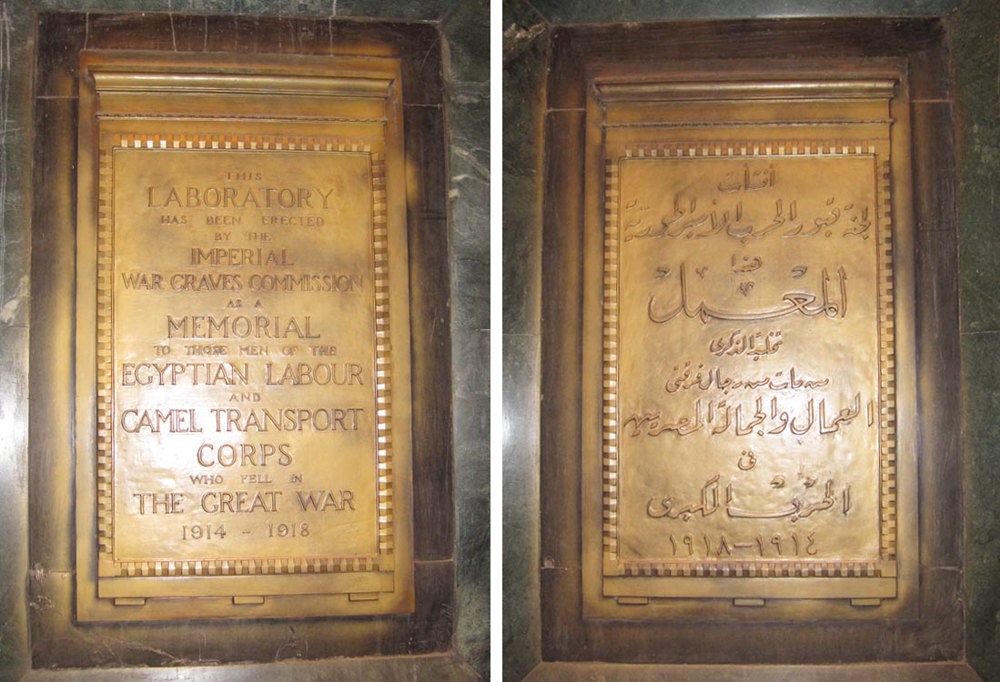
Bronze reliefs in English and Arabic commemorate those who died.
Location information
At El Giza, on the left bank of the Nile, opposite Old Cairo, is the Commonwealth War Graves Commission's Memorial to the dead of the Egyptian Labour Corps and the Camel Transport Corps whose graves are not known. It takes the form of an Ophthalmic Laboratory for training and research, erected beside the Ophthalmic Hospital.
Visiting information
For further information and enquiries please contact enquiries@cwgc.org
History information
The Egyptian Labour Corps came into existence in 1915. It was recruited chiefly in the Nile Delta and grew in numbers from 3,000 in January 1916 to 100,000 in November 1918, sending many thousands of men to France, Italy, Gallipoli, Salonika and Iraq. Its duties were varied, ranging from stevedores' work to stretcher-bearing and the drainage of marshes, but its greatest achievement was the triple line of railway, road and water-pipe which enabled the Egyptian Expeditionary Force to cross the desert and invade and liberate Palestine. The Corps suffered over 10,000 casualties. The original Camel Transport Corps was a small second-line transport unit formed in January 1915 to assist in the defence of the Suez Canal, but in the following December a permanent Corps was established. It began with ten Companies of 1,188 officers and men and 2,020 camels each and in 1918, its personnel exceeded 23,000. The Corps was recruited in Upper Egypt and was used for first-line transport and in special columns. Lord Allenby's Despatches of 18 September and 31 October 1918 bear witness to the distinction with which the personnel of these two Corps served, often under great hardships and sometimes under fire, and the important support they gave the Egyptian Expeditionary Force. The memorial bears no names, but two bronze panels depict the work of the two Corps.



